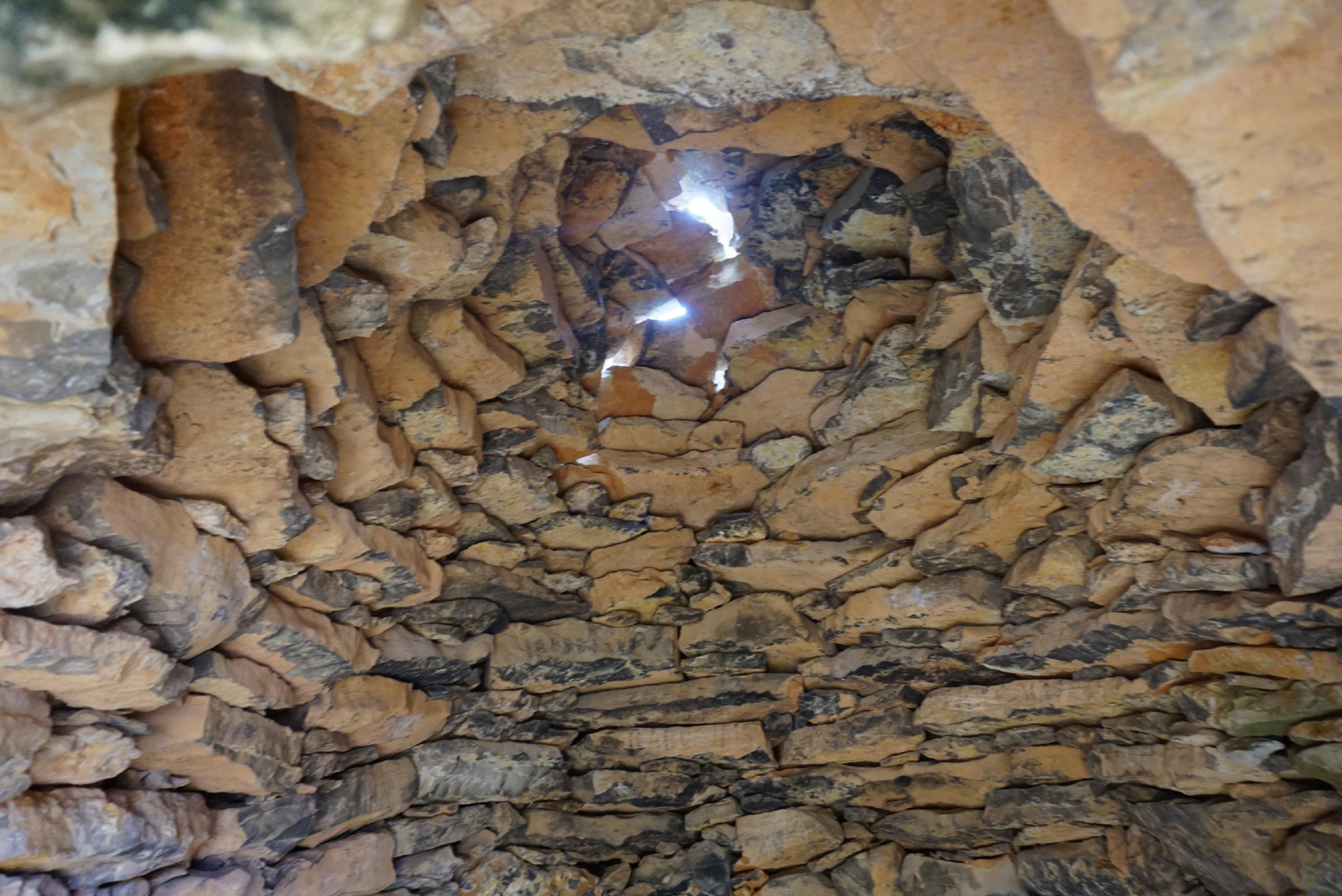
VEUS DE PEDRA SECA Situat en un entorn natural d’alt valor paisatgístic i patrimonial, amb vistes al mar Mediterrani, aquest projecte tindrà lloc en una barraca de pedra seca de la Costa Brava, en una ubicació encara per determinar. Ja sigui en el massís del Montgrí (Torroella de Montgrí) —on podria establir-se una col·laboració amb el Museu de la Mediterrània— o en l’abrupte paisatge del Cap de Creus, la intervenció estarà sempre arrelada en la relació entre els humans i el territori que habiten, ressaltant la interconnexió entre natura, cultura i significat. Les veus que escoltarem, a través d’uns altaveus ocults i alimentats per energia solar, ompliran l’espai interior de la barraca amb una endevinació sobre el futur d’aquest entorn.
Es convidaran endevins de diferents orígens culturals, representatius de la diversitat present en la societat contemporània. Les seves prediccions, registrades en les seves llengües maternes, convertiran la barraca en un petit oracle poètic, oferint reflexions íntimes sobre la nostra relació amb el paisatge i el futur compartit.
Aquest projecte forma part de I SEE, una recerca curatorial que investiga el paper del comissari com a endeví: algú capaç d’interpretar, revelar i fer visible allò ocult. I SEE combina antropologia, art i intuïció per explorar la curadoria com una pràctica ritual i simbòlica. Veus de Pedra Seca n’és una extensió site-specific, que utilitza les estructures de pedra seca com a espais de transmissió de coneixement intangible.
En aquest context, la barraca no és només una estructura física, sinó un espai liminal on el visitant entra de genolls, en un gest de reverència, per escoltar una visió, una veu. Amb més de 30.000 barraques de pedra seca documentades a Catalunya, principalment dels segles XVIII i XIX, aquestes construccions testimonien una antiga saviesa material i una manera de viure el territori.
La intervenció serà mínima i respectuosa: només s’hi col·locarà un petit altaveu de menys de 10 cm. Els participants rebran les coordenades GPS, accessibles només a peu, per garantir una experiència íntima i controlada. Aquestes veus, testimonis d’un món en transformació, ens recorden que el mar Mediterrani —el “mar entre terres”— ha estat sempre pont i connector de cultures, i que només a través de la col·laboració i l’escolta podrem preservar el que som i el que compartim.
Veus de Pedra Seca ha estat seleccionat per [TXIMIST - Última vèrtebra] 2025, es fará una presentació del projecte el 29 de novembre a Riudellots de la Selva.
DRY STONE VOICES
Situated in a natural setting of high scenic and heritage value, with views of the Mediterranean Sea, this project will take place inside a dry stone hut on the Costa Brava, at a location yet to be determined. Whether in the Montgrí Massif (Torroella de Montgrí) — where a collaboration with the Museum of the Mediterranean could be established — or in the rugged landscape of Cap de Creus, the intervention will always be rooted in the relationship between humans and the land they inhabit, highlighting the interconnection between nature, culture, and meaning.
The voices we will hear, through hidden speakers powered by solar energy, will fill the interior of the hut with a divination about the future of this environment. Fortune tellers from different cultural backgrounds, representative of the diversity present in contemporary society, will be invited. Their predictions, recorded in their native languages, will turn the hut into a small poetic oracle, offering intimate reflections on our relationship with the landscape and our shared future.
This project is part of I SEE, a curatorial research initiative that investigates the role of the curator as a seer: someone capable of interpreting, revealing, and making the hidden visible. I SEE blends anthropology, art, and intuition to explore curating as a ritual and symbolic practice. Voices of Dry Stone is a site-specific extension of this research, using dry stone structures as spaces for transmitting intangible knowledge.
In this context, the hut is not just a physical structure, but a liminal space where the visitor enters on their knees, in a gesture of reverence, to listen to a vision — a voice. With over 30,000 dry stone huts documented in Catalonia, mainly from the 18th and 19th centuries, these constructions bear witness to ancient material wisdom and a way of inhabiting the land.
The intervention will be minimal and respectful: only a small speaker of less than 10 cm will be installed. Participants will receive GPS coordinates, accessible only on foot, to ensure an intimate and controlled experience.
These voices, witnesses of a world in transformation, remind us that the Mediterranean Sea — the "sea between lands" — has always been a bridge and connector of cultures, and that only through collaboration and listening can we preserve who we are and what we share.
Veus de Pedra Seca has been selected for [TXIMIST – Última vèrtebra] 2025 and will be presented on the 29 of November in Riudellots de la Selva.




